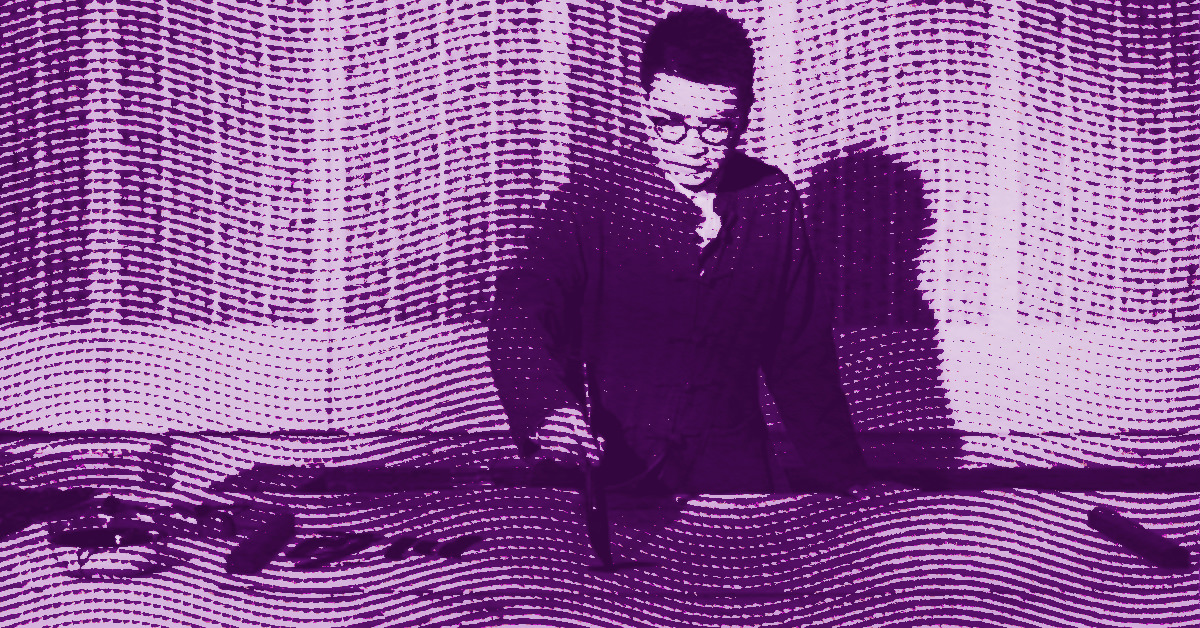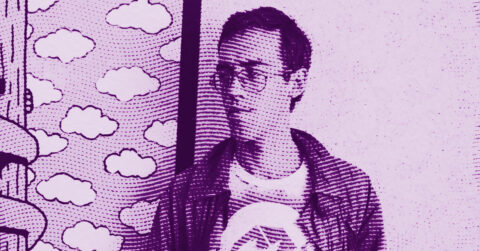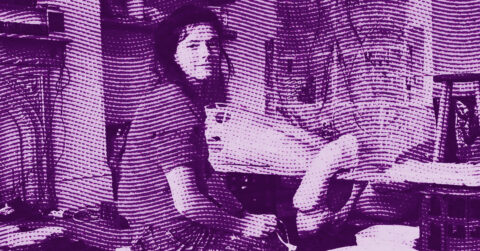Listen to me carefully, you bunch of snobs: Chen Jia’s work deserves much more than a distracted glance. This Chinese artist, trained in the age-old disciplines of calligraphy and landscape painting, embodies a demanding continuity. Born in the mountainous region of eastern Sichuan, among the imposing formations of the Daba mountains, he grew up where geography itself becomes pedagogy. His training follows a classical path: from childhood, he devotes himself to the meticulous copying of ancient masters. This “linmo” approach constitutes a method of in-depth investigation. By reproducing the monumental compositions of Fan Kuan, Chen Jia penetrates the very spirit of the Song master.
Chen Jia’s recent pictorial work shows remarkable maturity. His monumental landscapes in the Xieyi technique, which uses minimalist strokes to capture the essence of the subject, demonstrate expressive power where the ink flows with mastered freedom. Critic Xia Chao notes that some compositions reach “a territory of archaic thickness,” a rare quality in an artist of his generation. Beyond his plastic production, Chen Jia asserts himself as a theorist. His historical essay on Chinese calligraphy demonstrates considerable erudition.
Calligraphy as frozen dance
To fully grasp the dimension of Chen Jia’s work, it is necessary to evoke the reflections of Zong Baihua, whose book “Aesthetic Stroll” remains an essential reference. Zong Baihua offers a singularly enlightening reading when he states that Chinese painting, theater, and especially calligraphy share a common characteristic: all are traversed by the spirit of dance [1]. This intuition allows the art of Chen Jia to be apprehended from an angle that reveals all its choreographic depth.
Calligraphy, as practiced by Chen Jia, is not a simple inscription of signs. It is embodied movement, a gesture that unfolds in space and inscribes the very rhythm of life into the material. Zong Baihua writes that Chinese calligraphy is “accompanied by the musical rhythm of dance.” When Chen Jia wields his brush loaded with ink, he is not just writing: he is dancing with his tool. Every wrist gesture, every arm inflection participates in an invisible choreography of which only the black trace on the immaculate white paper remains. This choreographic dimension of Chinese writing finds its origin in the very structure of the language.
Chinese characters, unlike Western phonetic alphabets, retain an iconic dimension. They are “drawn actions,” where the movement that presided over their creation remains perceptible. When Chen Jia traces a complex character, the trained eye can reconstruct the brush ballet, its calculated hesitations, its mastered accelerations. Calligraphy thus becomes a petrified dance, a movement captured in the moment of its accomplishment. The analogy between calligraphy and dance deepens further when considering the notion of space. Dance creates a “spiritual and empty space” that unfolds through the movement of the dancer.
Similarly, Chinese calligraphy does not merely fill the page: it creates a dynamic space where the white is never just a background but an active element of the composition. Chen Jia, in his calligraphic works as well as in his paintings, admirably masters this art of the void. The non-inked spaces are not absences but silent presences, moments of rest in the overall choreography of the work. This conception of space finds a particular echo in Chinese visual arts. Zong Baihua notes that even Chinese architecture, with its roofs having raised eaves, expresses an “attitude of dance.” Chen Jia’s monumental landscape paintings participate in this same aesthetics of suspended movement.
The comparison between calligraphy and dance also illuminates the question of time in Chen Jia’s art. Dance is an art of time, unfolding in duration. Calligraphy, although it produces a permanent object, retains this temporal dimension. The execution of a character takes place in irreversible time. The calligrapher cannot go back: each gesture is definitive. This irreversibility gives calligraphy its dramatic tension. Chen Jia, when he traces his large formats, plays with this perilous temporality. Each work becomes a unique performance, a moment of dance captured for eternity.
Breathing constitutes another point of convergence between dance and calligraphy. The dancer rhythms his movement on his breathing, which becomes visible in the fluidity of his gestures. The Chinese calligrapher also coordinates his stroke with his breath. Chen Jia, trained in traditional disciplines, knows this technique of “qi”, the vital breath, which animates both the dancer’s body and the calligrapher’s hand. In his most accomplished works, one perceives this breathing: powerful strokes alternate with lighter passages, creating a respiratory rhythm that gives the whole its organicity.
Chen Jia’s art manifests this quality that Zong Baihua considers as the very essence of Chinese art: the ability to express movement in stillness, to suggest temporal flow in the permanence of the object. His mountains seem about to move, his calligraphic characters vibrate with contained energy. This dynamic tension places his work in the line of great masters who understood that Chinese art is never static.
The writing of the character and the forging of character
The second essential dimension to understand Chen Jia’s work lies in the traditional Chinese conception which establishes an organic link between the practice of calligraphy and the moral improvement of the individual. This idea, notably supported by the theorist Liu Xizai in his treatise “Yigai”, postulates that calligraphy is the visible expression of the deep character of the one who writes [2]. Liu Xizai, a nineteenth-century literary critic and calligrapher, formulated a famous phrase: “Writing resembles one’s knowledge, talent, aspirations. In short, it resembles the person in his entirety.”
This assertion constitutes a fundamental principle of Chinese calligraphic aesthetics. It suggests that each stroke traced reveals something of the calligrapher’s inner self. Chen Jia, nurtured by the sources of this tradition, could not ignore this ethical demand. When he dedicates himself to copying ancient masters, he does not merely seek to acquire their techniques: he attempts to absorb their virtue. Calligraphy thus becomes a spiritual exercise, an asceticism comparable to meditative practices.
This ethical conception of calligraphy is rooted in Confucian philosophy, which values harmony between the inside and the outside. A cultivated man must ensure that his outward actions faithfully reflect his inner dispositions. Calligraphy, the visible art par excellence, thus becomes a test of sincerity. The stroke relentlessly reveals any affectation, any pretense. Liu Xizai emphasizes this point when he states that “intention is the primary nature, the foundation of calligraphy.”
For Chen Jia, this moral requirement is not a burden but a source of depth. It obliges him to maintain a state of inner vigilance, to cultivate the qualities he wishes to see reflected in his art. The strength of his powerful strokes can only arise from authentic inner strength. The balance of his compositions can only emerge from a real psychic equilibrium. This ethical dimension sheds light on the importance accorded by the Chinese tradition to the biography of artists. The stories of Chinese art recount the lives of creators, their virtues, their trials. For one cannot truly understand a work without knowing the man who produced it.
Chen Jia’s journey, his perseverance in study, his modesty despite the recognition he has received, his attachment to traditional values: all this is not incidental to his art, but constitutes its very substance. Chen Jia’s intensive practice of calligraphy is part of a global discipline of life. It structures his relation to time, demanding regularity from him. It trains him in patience, a rare virtue in our era of immediacy. It teaches him humility before the greatness of the ancients, while giving him the confidence necessary to establish his own voice.
Liu Xizai also puts forward the idea that calligraphy must manifest a “harmony of the middle”, a concept borrowed from Confucian thought. It is a dynamic balance between opposing forces: strength and gentleness, rigor and freedom. Chen Jia, in his best works, precisely achieves this balance. His monumental landscapes combine expressive power and technical refinement. His calligraphies blend respect for classical norms and personal vigor. He is neither a servile imitator nor a gratuitous iconoclast. This demand for coherence between art and life makes us uneasy. Our time has indeed dissociated aesthetic judgment from ethical judgment, rendering any claim to read the moral value of an artist in his work suspect. Yet, the traditional Chinese perspective maintains this correlation as a regulating ideal.
A middle way
Chen Jia works in a complex context. Contemporary Chinese art is torn between the pressure of the millennia-old tradition, the attraction of Western models, and the demands of the globalized market. In this confused landscape, some break with the past, seeking ephemeral originality. Others take refuge in academic repetition of ancient forms. Chen Jia charts his own course. He does not reject tradition: he extends it. He does not deny modernity: he integrates it in his own way.
His large landscape compositions, with their raw energy, are not exercises in nostalgia. They speak to our time. In a world saturated with superficial digital images, the materiality of ink, the irreversibility of the gesture, the historical depth of form: all of this acquires new value. Critic Xia Chao notes that Chen Jia demonstrates a “research attitude executed with perseverance,” a quality that contrasts with “the restless air of some young people today.” Chen Jia does not seek quick success. He commits to the long term, accepting the slowness of maturation. In a culture of the instantaneous, this patience becomes almost subversive.
Chen Jia’s work reminds us that certain traditional values retain their relevance. The rigor of training, the importance of transmission, the respect for ancient masters: all principles that perhaps constitute necessary antidotes to contemporary excesses. Chen Jia shows that one can be an authentically contemporary artist while being rooted in a millennia-old tradition. His works are not historical reconstructions: they are alive and current. They prove that the great Chinese pictorial tradition is not a dead heritage, but a living organism capable of renewal.
The artist also invites us to reconsider our relationship with time. In an era obsessed with novelty, he recalls the value of repetition and deepening. His years spent copying the ancient masters are not wasted time: they constitute the fertile humus from which his own creativity emerged. This lesson applies beyond the artistic field: it questions our cult of constant innovation and our contempt for what endures.
Chen Jia’s work confronts us with our own contradictions. It exposes the inconsistency of our claims to radical originality. It suggests that true creation always requires grounding, a dialogue with those who came before us. It reminds us that we are less the sovereign authors of our works than links in a chain that surpasses us, and that this humble position, far from limiting our creative power, is its condition. In Chen Jia’s vigorous stroke resonates the echo of a thousand years of history, and it is precisely this temporal depth that gives his gesture its full meaning. This is a lesson that our amnesic age would do well to meditate on.
- Zong Baihua, Aesthetic Stroll, Shanghai Renmin Chubanshe, 1981.
- Liu Xizai, Yigai, 19th century.
















